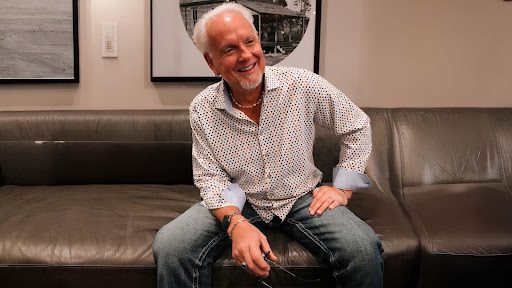Leadership commitment is one of the most critical success factors in sustaining excellence across organizations. Just ask Bruce J Cramer. Over the course of his 45-year career, Bruce J Cramer has held senior leadership positions with “Fortune 500” Corporations, where he was entrusted with leading strategic transformation and digital innovation initiatives. A graduate of the Kellogg School of Management’s Executive MBA program, Cramer became known as the person who could translate big ideas into operational realities. Today, he brings these 45 years of experience in his coaching work helping leaders scale their organizations. “When you are faced with the challenge of driving operational excellence, you need everybody,” Cramer says. “That starts with a leader who is self-aware and coachable, and a team that understands where it is strong and where the gaps are.”
Lead With EQ, Not Ego
For Cramer, the key differentiator is emotional intelligence. Teams move faster when leaders model self-awareness and humility, which is why he encourages clients to begin by taking inventory of their own strengths and blind spots, then to invite candid feedback. Being coachable, Cramer says, applies up and down the organizational chart. “Remain coachable on behalf of everyone,” he says. “See your current state clearly, align on a future state, then say it and drive it.” Cramer distills his operating system to three words that travel well across industries and company sizes: awareness, action, and accountability. Leaders diagnose what is real, decide what matters most, and commit to follow-through that can be inspected.
Build Trust Through Visible Accountability
In this model, trust is the outcome of consistent behavior. “You build trust through consistency, fairness, and accountability,” he says. Accountability includes the leader. If a struggling teammate is “allowed to skate,” morale suffers, and performance follows. Cramer shares a defining moment from his corporate career leading a then high stakes move to paperless picking in a large distribution network. This meant replacing printed order sheets with handheld scanners and digital instructions so warehouse staff could pick products faster and more accurately. It was meant to double productivity and reduce mistakes, but in the early days the technology was still unproven.
A misstep with these radio frequency devices temporarily halted operations. “I held myself accountable and said, this is on me, not the team,” he says. The response inside the room was not panic or blame. “Because the team felt empowered, we cut through noise quickly and course-corrected,” he adds. The lesson stuck. Visible accountability from the person in charge accelerates recovery and earns the credibility needed to lead the next initiative.
Make it Safe to Fail and Productive to Disagree
Cramer is looking for conflict — the fastest way, he argues, to innovation. “You have to welcome it. Conflict breeds innovation,” he says. Striving for harmony for its own sake can stifle limit creativity and risk taking that often leads to new solutions and ideas. Instead, Cramer urges leaders to “normalize intelligent risk and spirited debate.” In his experience, the organizations that learn fastest are the ones that resist scapegoating and keep momentum when the first plan bends. The teams he led didn’t always share the same risk tolerance, yet they shared the same aim. Deep listening, fair mediation, and a focus on the solution keep debate productive. “Listen more than you talk,” he says. The goal is not harmony for its own sake. It is progress that survives contact with reality.
Prepare Your Culture for AI-Speed Execution
Cramer views AI as an advocate and force multiplier, provided the culture around it is ready. “If you blindly engage with artificial intelligence, it will get you to where you do not want to go faster than ever.” That means sharper strategic clarity, tighter feedback loops, and stronger norms around data-driven accountability. Teams must be resilient, agile, and grounded in shared purpose, or the organization risks optimizing the wrong work. The paradox is that AI raises the bar on the fundamentals: Awareness matters more because leaders must separate signal from noise faster; action matters more because opportunities disappear more quickly; and accountability matters more because algorithmic outputs can obscure ownership.
A Playbook Leaders Can Use Today
Start with a clear view of current state, including skills and process gaps. Co-create a vivid, shared target condition that the team can picture. Empower people to make decisions at their level, and make accountability visible, beginning with the leader. Leaders who adopt this posture build cultures that compound. That is the essence of Cramer’s work with executives and owners who want profitable growth without losing their footing at home. “Once you see it together, you say it, then you drive it.”
For more insights from Bruce J Cramer, connect him on LinkedIn or visit his website.




